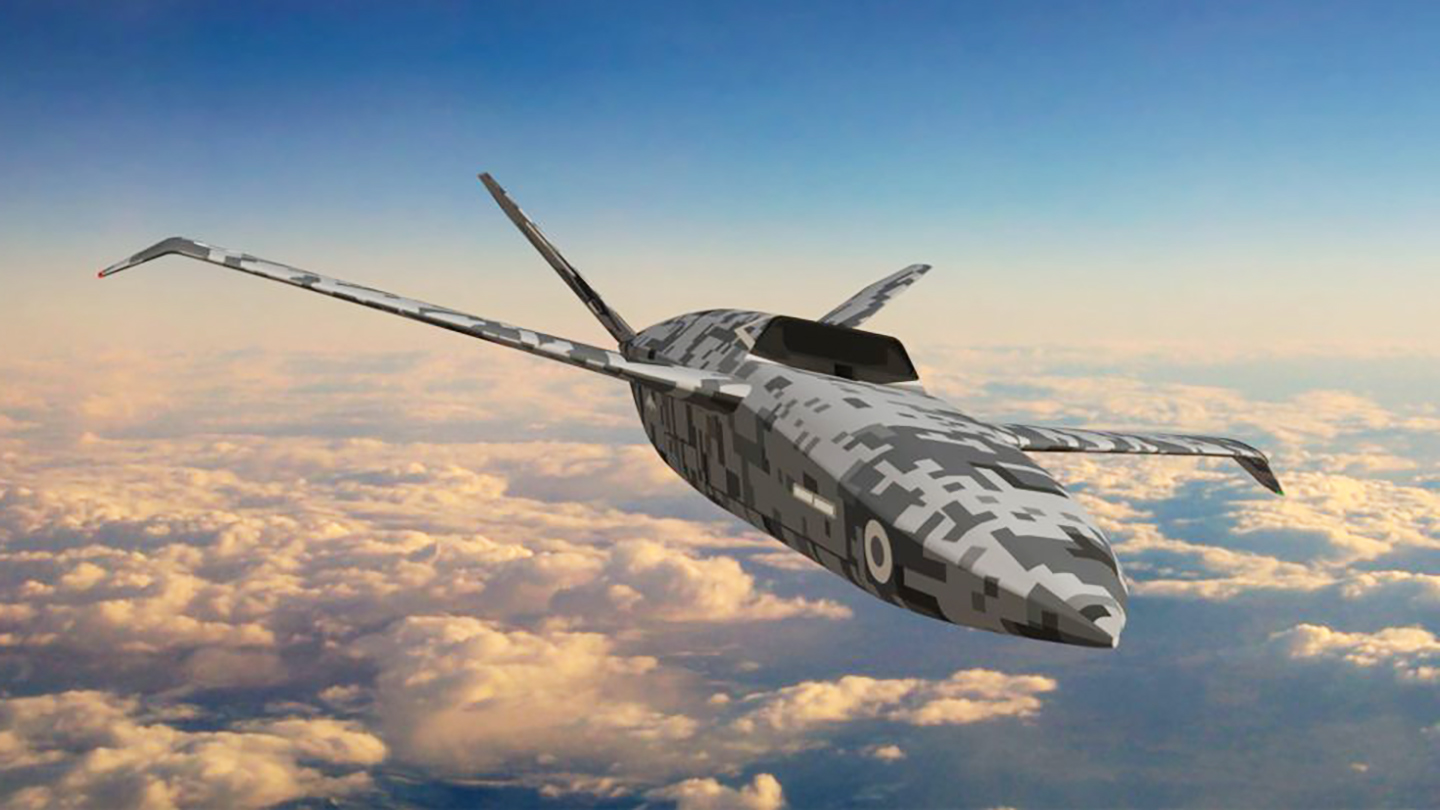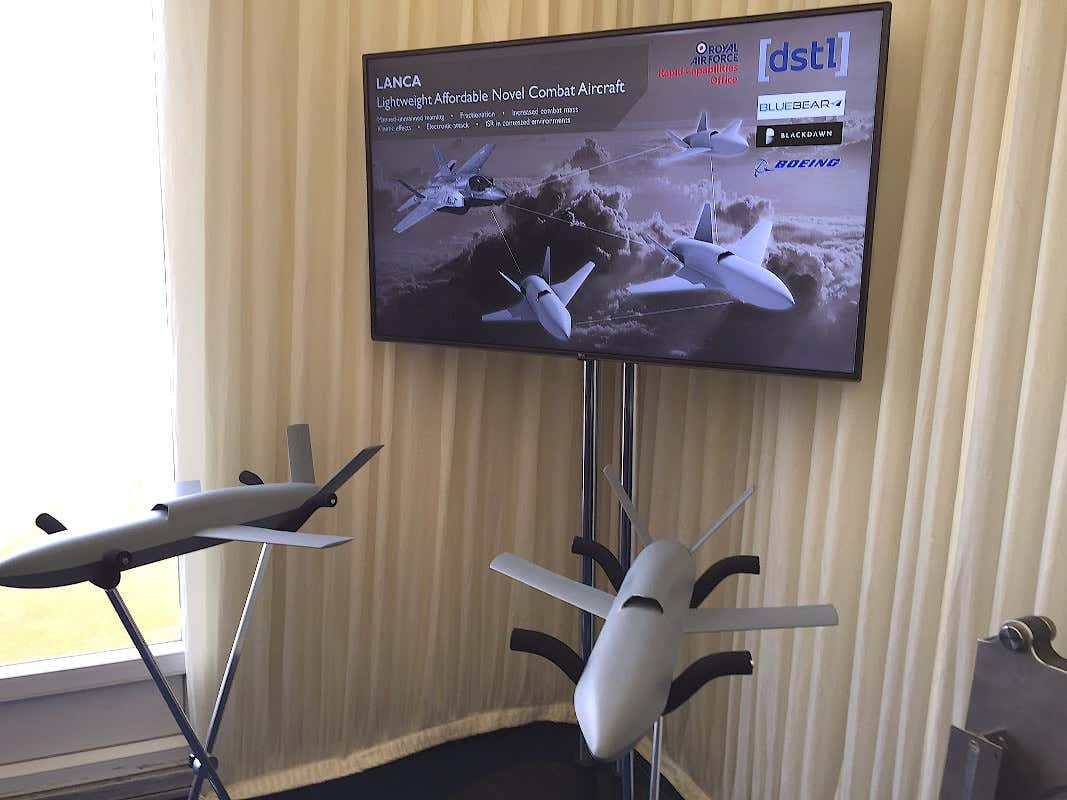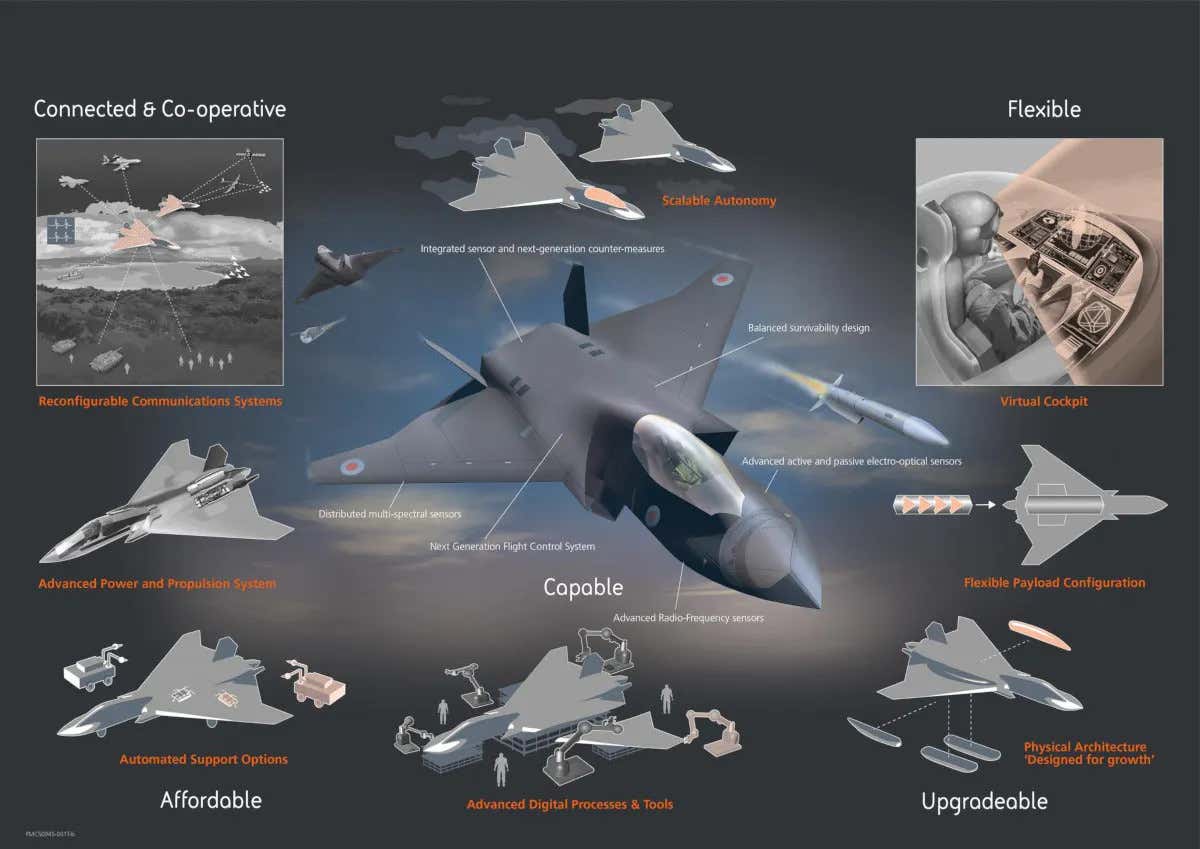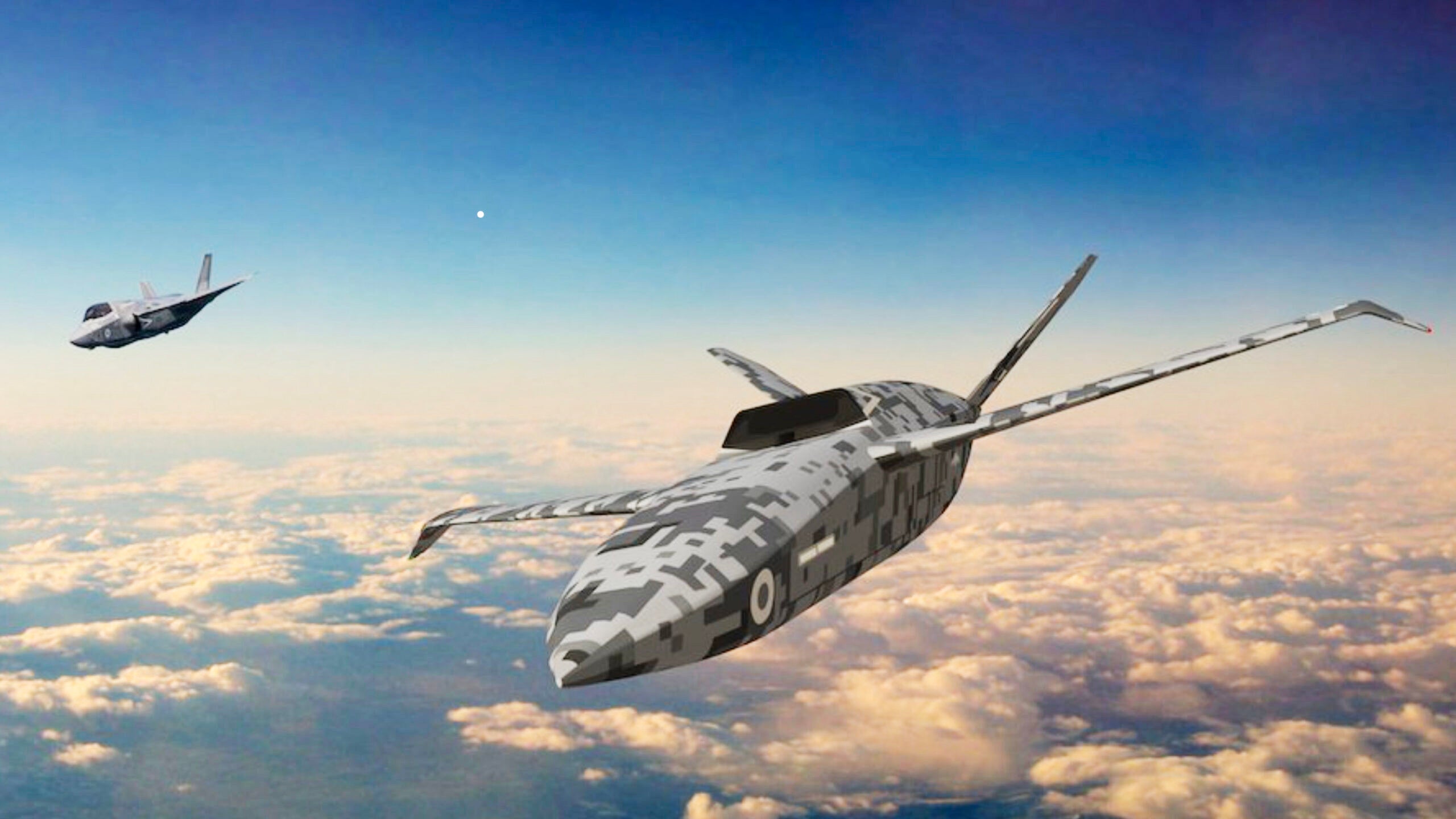The United Kingdom expects to have a prototype loyal wingman-type unmanned aircraft in the air by 2023, the Royal Air Force has confirmed, and the service announced today that a contract for the aircraft had been placed with the chosen industry prime. Northern Ireland-based Spirit AeroSystems will design and manufacture a prototype “uncrewed fighter aircraft” in its new role at the head of Project Mosquito, an effort to develop drones capable of working together semi-autonomously with manned aircraft, which The War Zone discussed in detail last year.
The deal that Spirit AeroSystems just received is worth 30 million pounds, or approximately just under $41 million, at the rate of exchange at the time of writing, and expected to wrap up in three years. Once the company has designed and built a technology demonstrator under Project Mosquito, a decision will be taken on whether to launch a follow-on program to yield a production version. Ultimately, the aim is to demonstrate the feasibility of a low-cost unmanned aircraft that, before the end of this decade, could potentially work together with the Royal Air Force’s (RAF) Eurofighter Typhoons and F-35B Lightnings, as well as the Tempest future stealth fighter jet that’s also now under development. The British loyal wingman will be expected to offer its piloted counterparts added “protection, survivability, and information as it flies alongside.”

In a press release today the U.K. Ministry of Defense (MOD) also revealed more details of how it expects its future loyal wingman to operate. The drones will “fly at high speed alongside fighter jets” and will carry “missiles, surveillance and electronic warfare technology.” The aircraft will be expected to target and shoot down enemy aircraft and “survive against surface-to-air missiles.”
“We’re taking a revolutionary approach, looking at a game-changing mix of swarming drones and uncrewed fighter aircraft like Mosquito, alongside piloted fighters like Tempest, that will transform the combat battlespace in a way not seen since the advent of the jet age,” declared Air Chief Marshal Mike Wigston, Chief of the Air Staff.
As well as these details, the MOD today released a new digitally generated concept artwork of a loyal wingman design, seen at the top of this story, flying alongside an F-35B, although it’s unclear if this represents the Project Mosquito technology demonstrator, or a follow-on production version. Either way — and however notional this concept is — it is broadly similar to the models displayed by the Royal Air Force and MOD at the 2019 Royal International Air Tattoo, shown below.

The latest concept retains the relatively narrow fuselage with swept wings and a v-tail, although the flying surfaces have become larger and the wings now feature prominent downward-canted tips. The low-observable features, including a dorsal air intake and fuselage chine line, are retained, while the exhaust seems to feature a serrated nozzle.
Project Mosquito is a part of the RAF’s Lightweight Affordable Novel Combat Aircraft (LANCA) concept. LANCA was launched in 2015 by the MOD’s Defence Science and Technology Laboratory (Dstl) executive agency and is intended to “understand innovative Combat Air technologies and concepts that offer radical reductions in cost and development time.” While it’s managed by Dstl, LANCA — including Project Mosquito — is led by the RAF’s Rapid Capabilities Office (RCO).
In turn, LANCA falls under a wider project, the Future Combat Air System Technology Initiative (FCAS TI), which also includes the Tempest future manned fighter. Last November, Prime Minister Boris Johnson announced that FCAS TI would be among the beneficiaries of additional investment into defense research and development. As announced by the Prime Minister in November 2020, the entire FCAS program is set to benefit from a portion of additional planned investment into military research and development, totaling 1.5 billion pounds, or around $2 billion.

Spirit AeroSystems has emerged to lead the Project Mosquito design and prototyping effort after the transfer of Bombardier’s Northern Ireland division to U.S.-based Spirit AeroSystems was sealed last October. Originally, the Belfast division of Bombardier Aerospace and Northrop Grumman UK had come together as a consortium known as Black Dawn, which was led by Callen-Lenz. This grouping was one of three entrants in the first phase of the project, competing with Boeing and another team led by Blue Bear Systems Research.
While it has been confirmed that Northrop Grumman UK remains part of a team that is now led by Spirit AeroSystems, there was no mention in the press release, or by the RAF, of Callen-Lenz, suggesting this company is no longer be involved. If so, that might also explain why the bid is no longer named Black Dawn.
With all its experience in developing the Airpower Teaming System (ATS) for the Australian government, it might have been expected that Boeing would have been the front-runner to design a new loyal wingman for the U.K., but it may yet find a role within LANCA, too, and Australia has permitted Boeing to share ATS data with the UK. In the past, the MOD said it had not ruled out awarding new contracts to more than one of the three Project Mosquito contenders.
The MOD has also said that the latest contract will support more than 100 jobs in Belfast. This, of course, is also good news for Northern Ireland’s economy, which, in the wake of the United Kingdom’s departure from the European Union (E.U.), faces particular challenges due to its special status including its border with the Republic of Ireland, a member of the E.U.
“[The contract for Spirit AeroSystems] is fantastic news and underlines the distinct strengths in Northern Ireland’s economy, through its advanced engineering and manufacturing capabilities,” said Northern Ireland Secretary, Brandon Lewis. “This ground-breaking project will involve a significant investment, which will not only support local employment but also reinforce Northern Ireland’s contribution to the security of our nation,” he added.
The plan is to start flight testing of a full-scale Project Mosquito vehicle by the end of 2023 and the MOD has said it will harness an unconventional approach to achieve this. In particular, the defense ministry has said it will use “the latest software development techniques and civilian aerospace engineering and manufacturing expertise.” The expectation is that this will not only speed the path to frontline service but also bring a reduction in costs.
The fact that the drone is expected to carry “missiles, surveillance and electronic warfare technology” points to a modular design, in which the vehicle can be rapidly reconfigured to perform different roles, including intelligence, surveillance, and reconnaissance (ISR), electronic warfare, and strike missions.

Interestingly, the latest MOD press release does not mention any swarming capability, although in the past it has been expected that this would be included. Indeed, the MOD is known to be looking at the feasibility of developing swarms of smaller drones and the RAF has now established a dedicated drone development unit, No 216 Squadron.
British ambitions to field swarming drones may also tie in with Italian defense contractor Leonardo’s recent demonstration in cooperation with the RAF of an autonomous swarm of unmanned aircraft, each carrying a variant of its BriteCloud expendable active decoy as an electronic warfare payload. Using the BriteClouds, which contain electronic warfare jammers, the drones were able to launch a mock non-kinetic attack on radars acting as surrogates for a notional enemy integrated air defense network. This work also involved Callen-Lenz, which was originally part of the Black Dawn team, as well as Blue Bear Systems Research. You can read more about the trials here.
The RAF’s Protector program is also progressing. This effort is set to provide the service with a more capable successor to its Reaper remotely piloted medium-altitude, long-endurance drone.
Together with all this, Project Mosquito — and the wider LANCA initiative — is an indication that the United Kindom is increasingly embracing an unmanned future. Now that a prime contractor has been selected for Project Mosquito, we hopefully won’t have long to wait until we see the first of the country’s loyal wingman drones.
Contact the author: thomas@thedrive.com
